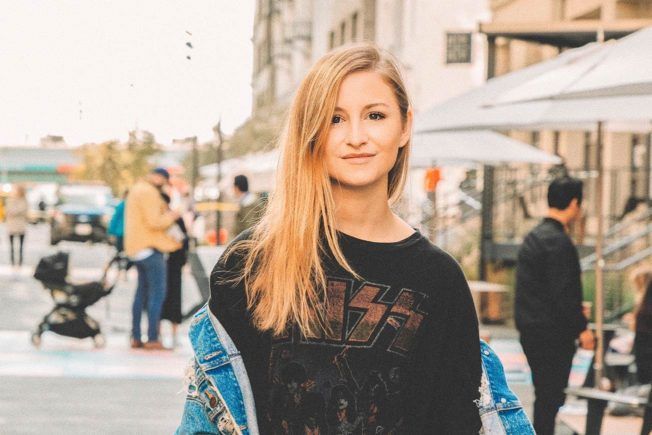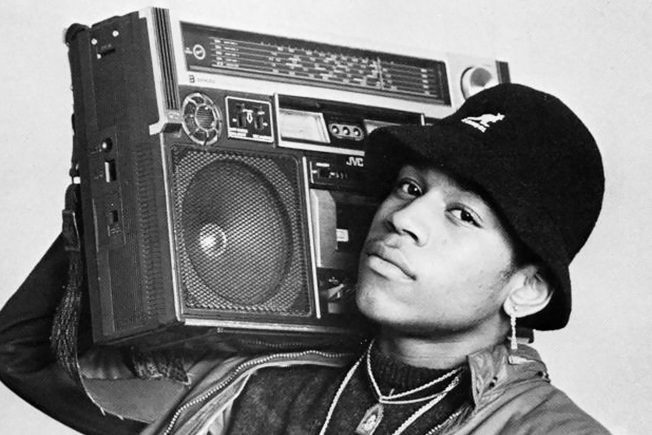This month’s student spotlight introduces you to Pauline Herr. Her inspiring voice and lyrics have been bringing songs alive across the electronic music scene.

Introducing Pauline Herr
This month’s Student Spotlight is our 2018 Student of the Year, Pauline Herr. Her voice and lyrics are some of the most sought-after in the electronic music scene right now. Her features with artists such as Taska Black, Kaivon, and We Are Fury have garnered millions of Spotify plays. And since leaving nursing school to go all in with music at ICON, she’s been developing some pretty mean production chops. She’s also launching her solo project very soon!
Pauline Herr Interview
In this short interview, Pauline shares her musical journey. She talks about musical inspirations and the path that led her to ICON Collective. Pauline also talks about her vocal recording process and the projects she worked on with other artists.
1. Tell me about your musical journey. Where did it all begin and how has it evolved? What brought you to ICON?
My memory of when I was younger is pretty bad. But I remember spending a lot of time in my earlier days with my piano and sang whenever my parents weren’t home. Also, I used to post videos on this app (similar to Vine) of me covering songs and no one around me had a clue I was doing it. I think that’s initially where my interest in music began. I also have to give some credit to my parents for signing me up for piano lessons and my dad for making me sing Christmas carols with him (a lot) when I was younger.
Fast forward to college days at The University of Wisconsin-Eau Claire for nursing. While there, I got back into recording covers (in secret). One day I posted a video of me singing “Hotline Bling” on Instagram and everyone freaked out. After that, I started recording covers with Logic and used YouTube to learn how to produce my own stuff. Then fast forward again to my first festival. Shortly after that, I went to a NGHTMRE and Slander Gud Vibrations show where I chatted with Tyler (NGHTMRE) about how he got started with music. His story sounded almost identical to my situation, and I think that’s the main reason I applied at ICON.
About two months later, after getting a bunch of music gear from my family and incredible brother (who wrote “follow your heart” in my Christmas card, which I have tattooed on my arm), I decided to drop out of college to pursue the thing I love. I spent every waking hour messaging artists I liked and watching YouTube videos in my tiny basement closet studio at home in Wisconsin. This constant grind led to my collaborations with Taska Black, Kaivon, Limitless, Tails, and a few more artists.
Around June 2017, I heard back that I got into ICON. After that, I moved to LA and started my classes. And tbh, I think I blacked out while in school there because I was so focused on using every second I had there to grow as an artist. One might say I was kind of a huge nerd and a hermit, but I’m so glad I made the most of my time with you guys – it definitely paid off. I’m also really excited (but equally nervous as heck) to finally put out some of my solo produced stuff.
2. Your voice and top lines are amazing! Where do you draw inspiration from while songwriting? What’s your process like?
In terms of inspiration, I usually throw whatever track sent to me into a DAW and record right away. If no ideas come right off the bat, then it rarely works out. I’ll move onto the next one to see if it inspires me. I’ve found that if I’m not super amped on a song, feel like a crack head when writing over it, and finish the song within 2 hours, then it’s not the one. Almost every feature I’ve done has been a 2-4 hour crack head Pauline session. Don’t worry I’m not actually on crack, I just get a high from working on music that inspires me.
I also want everything I write to be real and powerful, so I mostly draw inspiration from my own life (and often overdramatize things for effect). I almost always go with the original ideas in my head in terms of melodies because I want them to be unique rather than follow a formula. That’s what makes my top lines a bit different than most. Also, I like to be versatile and have my work sound different each time. I’ll work on songs that push me out of my comfort zone but also inspire me.
3. What song are you most proud of? What’s the story behind it?
Oh man, this is tough because I’ve worked with so many artists I absolutely love as both humans and musical wizards. I’d have to say it’s my recent collab with my friend Rob AKA Vincent. Rob is not only an incredible artist but also one of the kindest most down to earth people I’ve ever met. I was so nervous about getting into a session with him (s/o to my other good friend Justin for hooking it up). But the 12 hours we spent working together is some of the most genuine fun I’ve ever had. It was also really special because Rob let me get in on the production as well. It was also my first production/vocal collab release.
Aside from that song, my first solo produced song is probably in second place because the story behind it is very vulnerable. The main reason I’m doing this music thing is to make people feel something. The production definitely isn’t perfect, but perfection is overrated. In the end, I’m just hoping people will connect with my stories as a human being.
4. What are your secret weapons for vocal production?
Honestly, just not overdoing it and realizing that less is more when it comes to vocal processing has been key for me. I still have a long way to go in terms of vocal production. But I’ve found that making sure I have a clean take, to begin with, is most important. Everything else after that is easy. I use subtle EQ, waves compressors (Waves CLA-76 and CLA-2A are my go-to), reverb ( Valhalla Room or VintageVerb on a send), and then any creative stuff afterward. I’m a sucker for Ableton Live’s stock vocoder! Also, I think nice harmonies and adlibs can make or break a track, so I always go in on both.
Connect with Pauline Herr

Turn your passion for music into a Profession: Learn more about our Music School Programs!
MORE ARTICLES FROM THE ICON BLOG

FIND YOUR SOUND, HONE YOUR CRAFT:
Are you ready to turn music into a career? ICON prepares students to become music producers, composers, performers, recording artists, professional DJs, and entrepreneurs in the entertainment industry. Click below to get information about our award-winning programs:

